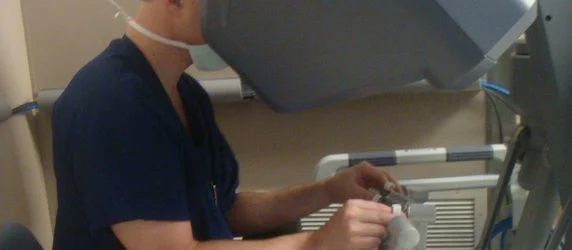Infective endocarditis is a potentially fatal bacterial disease of the heart which frequently affects the heart's tricuspid valve, often resulting in permanent tissue damage.
A pioneering new reconstructive technique, in which the valve is repaired with a bioscaffold on which new tissue can grow, has proven promising and has given a new lease on life to patients at the Temple University Hospital, in Philadelphia, USA.
Dr T. Sloane Guy, MD, MBA, Associate Professor of Surgery, Section Chief of Cardiovascular Surgery, and Chief of Robotics at Temple University School of Medicine (TUSM) is one of only about a dozen cardiovascular surgeons in the United States who has performed complete tricuspid valve repair procedures using CorMatrix, an extracellular matrix (ECM) material.
In 2013, he became one of the first to perform the reconstruction endoscopically using robotic techniques. This week, he held a video presentation of the pioneering procedure at the 50th annual meeting of the Society of Thoracic Surgeons (STS in Florida.
A revolutionary tool in medicine, robotic surgery has been both celebrated for its benefits and criticised for its high cost and high-profile failures. But according to Dr. Guy, totally endoscopic robotic heart surgery not only reduces the size of incisions made in the chest, it additionally utilises the ability of surgeons, through the robotic-assisted tools and techniques, to make minute, high-precision movements. This combination makes this technique superior to traditional approaches.
Dr. Guy recently conducted a robotic repair by inititally removing nearly all of the damaged valve from the patient's heart. His second step was the so-called 'cylinder technique', aimed at repairing the damaged tissue with a sheet of bioscaffolding that had been fashioned into a tube. The tube effectively served as a new valve.
The surgeon explained that the team used a CorMatrix bioscaffold to completely reconstruct the valve. These bioscaffolds consist of a sheet of ECM, an acellular meshwork of fibers and carbohydrate polymers that facilitates reconstruction by giving patients' own cells a framework on which to build new tissue. Due to the fact that ECM is made of natural materials, the patient's own cells replace it eventually, and the body absorbs it. Another advantage held by ECM is the low likelihood of rejection, as it does not contain foreign cells or proteins that could initiate an immune response.
Concluding, Dr. Guy stated that Temple Cardiovascular Surgery has had a big presence at this year’s meeting.
Source: Science Daily
28 January 2014
Latest Articles
Cardiovascular, Surgery, heart valve, robotic surgery, endoscopic, valve reconstruction, bioscaffolding
Infective endocarditis is a potentially fatal bacterial disease of the heart which frequently affects the heart's tricuspid valve, often resulting in perma...










